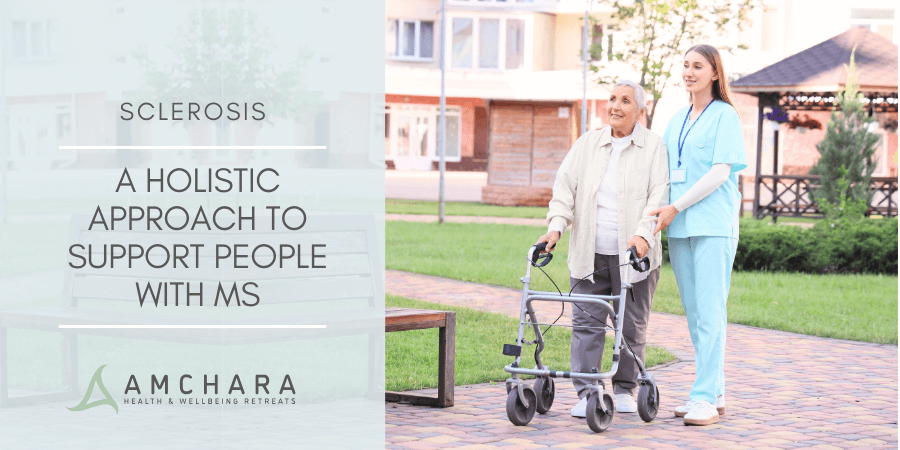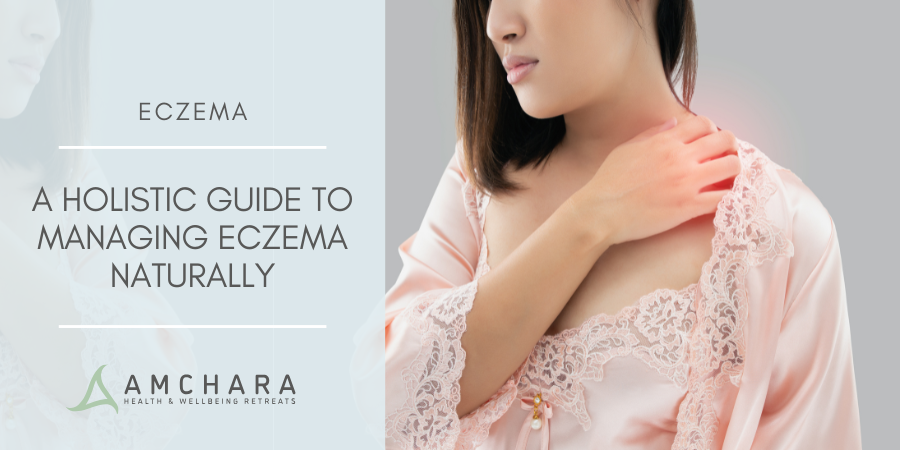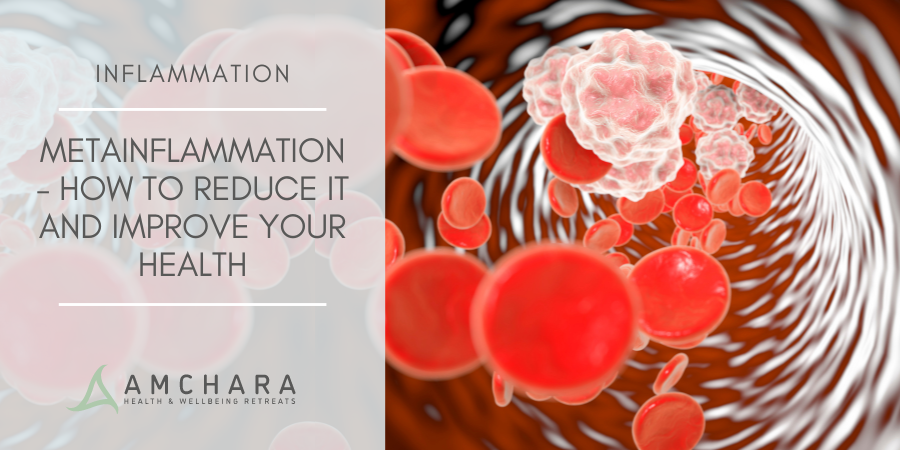What is Iodine?
- Iodine is a mineral
- Iodine is an essential micronutrient supporting some of the most vital functions of the human body.
- Iodine is an essential component in thyroid hormone production
- Iodine is a nutrient that is needed daily
- Optimal iodine levels in the body are 15-20 mg – mostly in the thyroid gland
Introduction
Iodine is a trace element and was one of the earliest to be recognised as essential.
In the first half of the 19th century it was established that iodine can only be sourced from the diet which in turn is dependent on the iodine content of the soil and water.
Iodine is a unique mineral mainly found concentrated in oceans and briny water.
Marine plants such as seaweed are frequently high in iodine whereas plants on land generally contain low amounts. Seafood is also rich in iodine.
Iodine is so crucial to health that US government officials decided it should be added to table salt, which is commonly used.
However in the UK this is not common practice even though it is recognised that this mineral is extremely important.
The World Health Organisation estimate that over 2 billion people world-wide have insufficient iodine – areas such as the Andes, the Alps, the Himalayas and flooded river valleys such as the Ganges are amongst the most iodine-deficient parts of the world.
The number of countries where iodine deficiency presents a problem for public health has halved over the past 10 years.
However there are still 54 countries that remain iodine deficient.
Apart from iodized salt, which is available in the UK, fish, seafood and seaweed such as kelp, nori, Kombu and wakame, as well as fruit and vegetables grown in iodine rich soil are the best sources of iodine.
Considerable amounts of iodine are lost through cooking – up to 70%, so iodized salt should be added after rather than before cooking.
Functions of Iodine
Iodine plays a crucial role in maintaining the health of the thyroid.
A healthy human body contains 15-20 mg iodine and as much as 70-80-% of this is found in the thyroid gland.
The thyroid gland is a butterfly shaped gland that surrounds the windpipe.
Iodine is an essential trace element and is taken up readily through the stomach and duodenum in the form of iodate or iodide; the iodate is reduced in the gastrointestinal tract and converted to iodide ready for absorption.
Once Iodide enters the circulation it is incorporated into the amino acid tyrosine, to create thyroid hormones.
The thyroid gland traps the iodide and acts as both a factory and a warehouse to produce and store thyroid hormones of which there are two: thyroxine (T4) and triiodothyronine (T3).
Although T4 is more plentiful, it is best thought of as a pro-hormone; a precursor to T3 which is biologically more active in the body.
Thyroid hormones increase the basal metabolic rate and regulate all intracellular metabolisms.
This determines how efficiently calories are burned. It is also responsible for regulating a number of physiologic processes, which include: growth, reproduction, nerve and muscle function, the synthesis of protein, the growth of nails and hair and the use of oxygen by all the cells in the body.
Deficiencies
Iodine deficiency occurs due to low levels of iodine in the soil which subsequently produces foods with low concentrations.
This inevitably leads to insufficient iodine intake in the population.
A deficiency of iodine results in a wide range of adverse health conditions which come under the umbrella term of iodine-deficiency disorders (IDD).
Common IDDs include:
- Goitre
- Decreased fertility rate
- Growth retardation
- Increased infant mortality
- Reduced Intellectual capacity
- New-born hypothyroidism
- Stillbirth
- Spontaneous abortion
- Cretinism
The damage caused to an individual due to iodine deficiency is in fact the result of deficiency of thyroid hormones.
Lack of iodine impairs the production of thyroid hormones which adversely affect the heart, liver, muscles, kidney and embryonic brain development.
In humans, early brain development occurs in the womb and up to 3 years of age.
Deficiencies of iodine during pregnancy can seriously jeopardise children’s mental health or even their survival.
Iodine deficiency is the leading cause of preventable mental retardation.
Although it is extremely rare in developed countries parts of Europe are vulnerable.
Severe cases of iodine deficiency can lead to hypothyroidism; one of the earliest and most visible signs of iodine deficiency is an enlarged thyroid gland (goitre).
Typical signs of hypothyroidism include:
- dry skin
- fatigue
- weight gain
- a hoarse voice
- depression
- constipation
- delayed reflexes
- lack of mental clarity
When dietary intake of iodine is inadequate, plasma levels of T4 fall.
This triggers a number of compensatory processes enabling the body to restore sufficient thyroid hormone production.
The pituitary gland releases more thyroid stimulating hormone (TSH) which prompts an increase in the uptake of iodine as well as increased production of T3 and T4.
Persistent stimulation from TSH as it tries to trap more iodine can cause considerable enlargement of the thyroid gland.
Your genes can also impact thyroid function.
The most well studied and documented genes are DIO1 and DIO2, these are deiodinase genes and involved in the conversion of T4 to T3, the active thyroid hormone.
This process happens by the removal of one iodine molecule. Inherited variations on either D1O1 or D1O2 can significantly slow down the conversion of T4 to T3 affecting basal metabolism.
People of any age can be affected by iodine deficiency, however the most devastating complications are seen where iodine is deficient during foetal and neonatal growth.
Iodizing salt is one of the most effective methods of preventing IDD.
According to UNICEF approximately 66% of households globally have access to iodized salt.
| Food Sources of Iodine | ||
| Food | Approximate Micrograms (mcg) per serving | Percent DV* |
| Seaweed, whole or sheet, 1 g | 16 to 2,984 | 11% to 1,989% |
| Cod, baked, 3 ounces | 99 | 66% |
| Yogurt, plain, low-fat, 1 cup | 75 | 50% |
| Iodized salt, 1.5 g (approx. 1/4 teaspoon) | 71 | 47% |
| Milk, reduced fat, 1 cup | 56 | 37% |
| Fish sticks, 3 ounces | 54 | 36% |
| Bread, white, enriched, 2 slices | 45 | 30% |
| Fruit cocktail in heavy syrup, canned, 1/2 cup | 42 | 28% |
| Shrimp, 3 ounces | 35 | 23% |
| Ice cream, chocolate, 1/2 cup | 30 | 20% |
| Macaroni, enriched, boiled, 1 cup | 27 | 18% |
| Egg, 1 large | 24 | 16% |
| Tuna, canned in oil, drained, 3 ounces | 17 | 11% |
| Corn, cream style, canned, 1/2 cup | 14 | 9% |
| Prunes, dried, 5 prunes | 13 | 9% |
| Cheese, cheddar, 1 ounce | 12 | 8% |
| Raisin bran cereal, 1 cup | 11 | 7% |
| Lima beans, mature, boiled, 1/2 cup | 8 | 5% |
| Apple juice, 1 cup | 7 | 5% |
| Green peas, frozen, boiled, 1/2 cup | 3 | 2% |
| Banana, 1 medium | 3 | 2% |
*DV = Daily Value. DVs were developed by the U.S. Food and Drug Administration (FDA) to help consumers compare the nutrient contents of products within the context of a total diet.
Inhibition of Iodine
Most people get all the iodine they need from their diet, especially if they eat fish or seaweed.
However certain raw foods known as goitrogens consumed in large amounts can block the utilisation of iodine.
Cooking usually inactivates goitrogens.
Foods containing goitrogens:
- Brassica family: Cauliflower, Cabbage, Broccoli, Brussel sprouts, collards, kale, kohlrabi
- Cassava root
- Sweet potato
- Soybeans and soy products
- Peanuts
- Pine nuts
- Millet
- Peaches
- Strawberries
Clinical Uses:
Prevention of iodine deficiency – This is the primary use for iodine
Fibrocystic breast disease – According to animal and human studies iodine may be an effective therapy for this disease.
The benign condition is characterized painful and lumpy breasts.
Breast tissue has a high concentration of iodine particularly during pregnancy and lactation.
It is thought that a lack of iodine renders the epithelium more sensitive to oestrogen stimulation, which in turn produces micro cysts that later develop into fibrocystic breast disease.
It occurs commonly in women during the reproductive years but can also affect menopausal women, especially those taking oestrogen.
Some research suggests that iodine might be helpful for fibrocystic breast disease.
Clinical trials have been performed using different forms of iodine; sodium iodide, protein–bound iodide and molecular iodine.
Whilst iodides were found to be effective they exhibited a high rate of side effects.
Elemental iodine achieved the same results but without negative side effects.
However doses used in these studies was above the tolerable upper intake level recommended and should only be used under medical supervision.
Skin applications – Iodine is used to treat skin disease caused by cutaneous sporotrichosis (a fungus). It is also applied to skin to kill germs and prevent soreness inside the mouth caused by chemotherapy.
Leg ulcers – According to research, treatment with iodine increases the healing rate of leg ulcers and reduces the chance of future infection.
Radiation exposure – iodine is used in the case of radiation emergencies to protect the thyroid gland from radioactive iodides.
Excessive Iodine – health risks
Too much iodine can create the same symptoms as those found in a deficient state – including goitre, raised TSH levels and hypothyroidism.
Some individuals are more sensitive to excess iodine which can inhibit thyroid hormone production and thereby increase TSH stimulation causing goitre.
Hyperthyroidism can also result from excessive iodine intake, usually following iodine administration to treat an initial deficiency.
Studies have also shown that too much iodine can increase the risk of Graves’ disease, thyrotoxicosis, thyroid papillary cancer and Hashimoto disease.
Supplements:
Potassium iodide and sodium iodide is available in supplement form, and is a standard ingredient in multi-vitamin and mineral formulations.
Results from a small study found that potassium iodide achieves almost complete absorption.
Supplementation should be approached with care as both iodine deficiency and excess have considerable risks.
Supplementing with iodine may provoke symptom flare-ups in individuals with Hashimoto’s disease due to its stimulating effect on autoimmune antibodies.
Contra-indications
Due to the potential for side effects and interactions with medications, iodine supplements should not be taken without first consulting a health practitioner.
Some examples listed below:
- Anti-thyroid medications
Taking high doses of iodine with anti-thyroid medications can have an additive effect and may cause hypothyroidism.
- Angiotensin-converting enzyme (ACE) inhibitors
These are used to treat high blood pressure. Taking potassium iodide with ACE inhibitors can increase the risk of hyperkalaemia (elevated blood levels of potassium)
- Potassium-sparing diuretics
Taking potassium iodide with potassium-sparing diuretics can increase the risk of hyperkalaemia.
Dosage Recommendations:
Adults: 150mcg/day. Pregnant women: 220mcg/day. Breast-feeding women: 290mcg/day.
One teaspoon of iodised salt contains about 300mcg of iodine.
There is very little risk of iodine overdose even at levels 10 to 20 times the RDA.
However, because too much iodine can actually inhibit thyroid gland synthesis, more than 500mcg daily is not recommended.
Safety:
Acute iodine toxicity is rare and generally only occurs in doses of many grams.
Symptoms of poisoning include, fever, vomiting nausea, diarrhoea, weak pulse, burning of the throat, mouth and stomach, cyanosis and coma.
READ NEXT:
References:
- Ahad F & Ghanie S. Iodine, Iodine metabolism and Iodine deficiency disorders revisited. Indian J Endocrinol Metab. 2010; 14(1): 13–17.
- Aquaron R, Delange F, Marchal P et al. Bioavailability of seaweed iodine in human beings. Cell Mol Biol. 2002;48(5):563-569.
- Bowen R. Vivo Pathophysiology. Synthesis and Secretion of Thyroid Hormones. http://www.vivo.colostate.edu/hbooks/pathphys/endocrine/thyroid/synthesis.html.
- Delange F. Iodine deficiency in Europe. Cas Lek Cesk. 1995; 134,3:35-43.
- El-Shafie KT. Clinical presentation of hypothyroidism. J Family Community Med. 2003; 10, 1:55-58.
- Jamison J.(2003). Clinical Guide to nutrition and dietary supplements. Churchill Livingstone: UK.
- Kapil U. Health Consequences of Iodine Deficiency.Sultan Qaboos University Medical Journal. 2007;7(3):267-272.
- Lee S. Medscape. Iodine Deficiency. http://emedicine.medscape.com/article/122714-overview#a5.
- Murray M (1996). Encyclopedia of Nutritional Supplements. Prima Publishing:Rocklin CA.
- Office of Dietary Supplements. Iodine. https://ods.od.nih.gov/factsheets/Iodine-HealthProfessional.
- Pauling L. Oregan State University. http://lpi.oregonstate.edu/mic/minerals/iodine.
- University of Maryland Medical Center. Iodine. http://www.umm.edu/health/medical/altmed/supplement/iodine.
- Vitamins & Supplements. Iodine. http://www.webmd.com/vitamins-supplements/ingredientmono-35-iodine.aspx?activeingredientid=35.
- World Health Organization. Micronutrient deficiencies. Iodine deficiency disorders. http://www.who.int/nutrition/topics/idd/en/
- Panicker V, Saravanan P, Vaidya B, Evans J, Hattersley AT, Frayling TM, Dayan CM (2009) Common Variation in the DIO2 Gene Predicts Baseline Psychological Well-Being and Response to Combination Thyroxine Plus Triiodothyronine Therapy in Hypothyroid Patients, The Journal of Clinical Endocrinology & Metabolism 94 5 1623–29
-
Panicker V, Cluett C, Shields B, et al. (2008) A Common Variation in Deiodinase 1 Gene DIO1 Is Associated with the Relative Levels of Free Thyroxine and Triiodothyronine. The Journal of Clinical Endocrinology and Metabolism 93 8 3075-81




